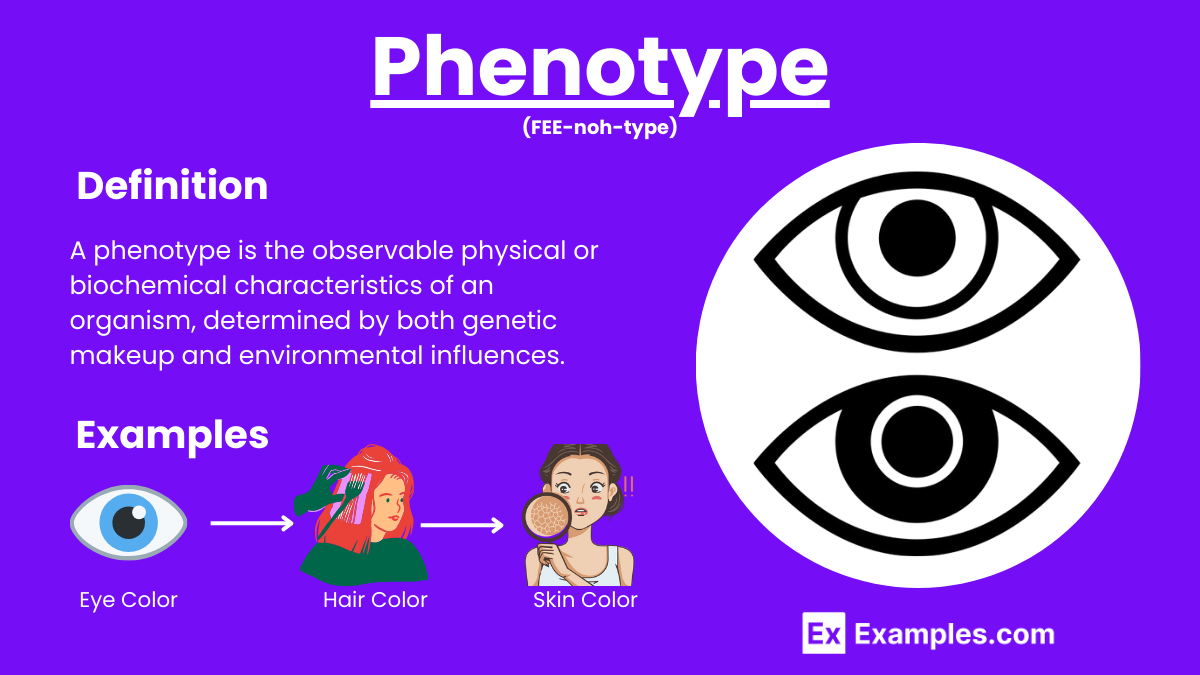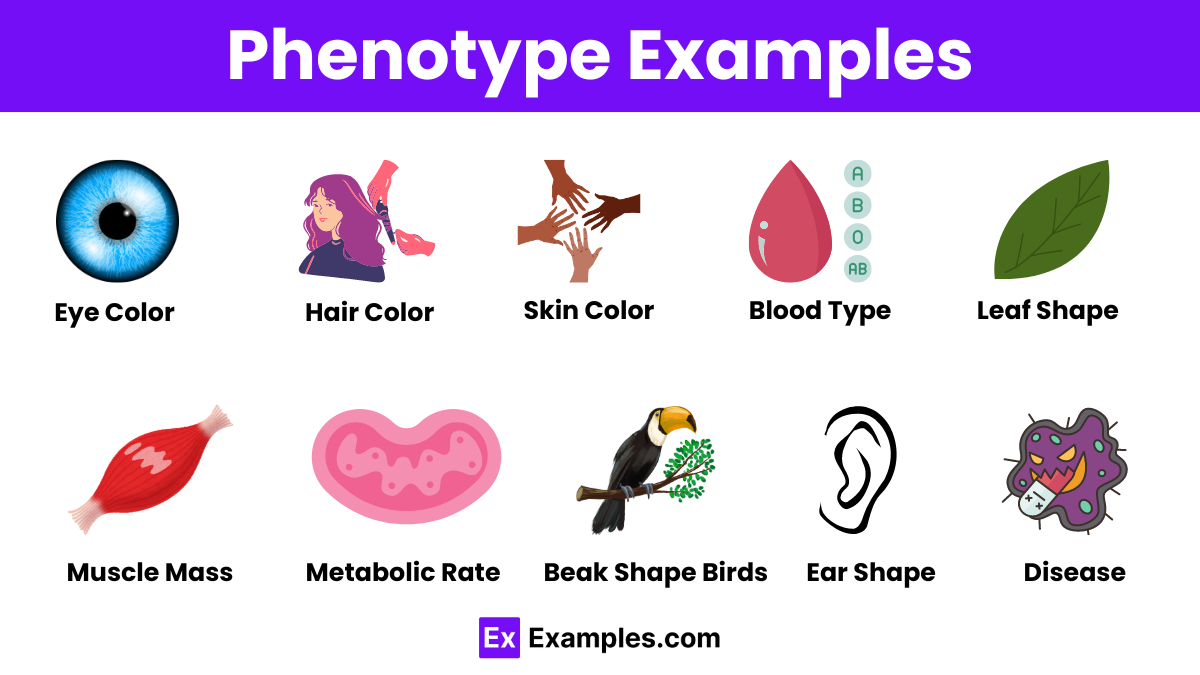What is the definition of phenotype?
The genetic makeup of an organism
The physical and observable traits of an organism
The environmental influences on an organism
The process of evolution


A phenotype is the observable characteristics or traits of an organism, such as physical appearance, development, and behavior. These traits result from the interaction of its genetic makeup, or genotype, with the environment. DNA plays a crucial role in determining the phenotype, as it carries the genetic information that codes for various traits. Environmental factors can influence how these genetic instructions are expressed, leading to the diverse range of phenotypes seen within a species.
A phenotype is the set of observable characteristics or traits of an organism, such as morphology, development, biochemical or physiological properties, and behavior, which result from the interaction of its genetic makeup (genotype) with the environment.

The phenotype ratio refers to the proportion of different phenotypes observed in the offspring of a genetic cross. It is often used in genetics to predict the outcome of a cross between organisms with different genotypes. This ratio is calculated based on Mendelian inheritance principles, where dominant and recessive alleles influence the traits that appear in the offspring, which can impact the diversity and adaptability of phenotypes within an ecosystem.
The cell phenotype refers to the observable characteristics and traits of a cell that result from the interaction of its genetic information with environmental factors. Here are the key aspects:
| Aspect | Phenotype | Genotype |
|---|---|---|
| Definition | Observable traits or characteristics of an organism | Genetic makeup of an organism |
| Components | Physical appearance, behavior, biochemical traits | DNA sequences, alleles, genetic codes |
| Influence | Result of interaction between genotype and environment | Determined solely by inherited genes |
| Variability | Can change due to environmental factors | Remains constant throughout an organism’s life |
| Examples | Eye color, height, skin color, metabolic rate | AA, Aa, aa for a single gene; complete genetic profile |
| Measurement | Observed and measured through physical examination | Analyzed through genetic testing and sequencing |
| Inheritance | Not directly inherited; phenotype depends on genotype and environment | Inherited from parents, combination of maternal and paternal genes |
| Expression | Visible traits expressed in an organism | Potential traits an organism can pass on to offspring |
The phenotype of an organism with a dominant allele will typically express the trait associated with that allele, even if only one copy is present.
Yes, a single gene can influence multiple phenotypes through a process known as pleiotropy.
Scientists study phenotypes through observational studies, experiments, and techniques such as genetic analysis and imaging.
Mutations can alter the genetic code, potentially leading to changes in the phenotype if the mutation affects gene expression or function.
Yes, identical twins can have different phenotypes if they are exposed to different environmental conditions or experiences.
Phenotypic variations provide the raw material for natural selection, where advantageous traits increase an organism’s chances of survival and reproduction.
Phenotypes themselves are not inherited; rather, the genetic information (genotype) that influences phenotypes is passed from parents to offspring.
An example of a phenotype is flower color in plants, such as red or white flowers in peas.
Yes, phenotypes can change over an organism’s lifetime due to environmental influences, developmental stages, and aging.
Environmental factors such as temperature, nutrition, light, and stress can affect the expression of genes, leading to variations in phenotypes.
Text prompt
Add Tone
10 Examples of Public speaking
20 Examples of Gas lighting
What is the definition of phenotype?
The genetic makeup of an organism
The physical and observable traits of an organism
The environmental influences on an organism
The process of evolution
Which of the following is an example of a phenotype?
The genetic sequence of a flower
The color of a rabbit's fur
The temperature at which a plant grows
The DNA structure of a fish
Which of these factors can influence an organism's phenotype?
Only genetic factors
Only environmental factors
Both genetic and environmental factors
None of the above
In pea plants, the trait for tall stems (T) is dominant over the trait for short stems (t). What is the phenotype of a plant with the genotype Tt?
Tall
Short
Medium
Variable
Which statement is true about phenotypes?
They are always determined solely by genetics
They can change over an organism's lifetime
They cannot be influenced by the environment
They are identical in all organisms of the same species
What type of phenotype would you expect from a homozygous recessive genotype (aa) in a trait where 'A' represents a dominant allele?
Dominant phenotype
Recessive phenotype
Mixed phenotype
Variable phenotype
How does a phenotype differ from a genotype?
Phenotype is genetic; genotype is physical
Phenotype is observable; genotype is genetic makeup
Phenotype determines traits; genotype does not
Phenotype is the same as genotype
Which of the following describes a phenotype that is influenced by multiple genes?
Simple trait
Polygenic trait
Mendelian trait
Dominant trait
If two parents with the same phenotype produce offspring with a different phenotype, what might explain this?
Both parents have the same genotype
Environmental factors are influencing the offspring
One parent carries a hidden recessive allele
Offspring cannot have different phenotypes
What is the primary purpose of studying phenotypes in genetics?
To determine the exact DNA sequence
To predict future evolutionary changes
To understand how traits are expressed in organisms
To identify all possible genotypes
Before you leave, take our quick quiz to enhance your learning!

